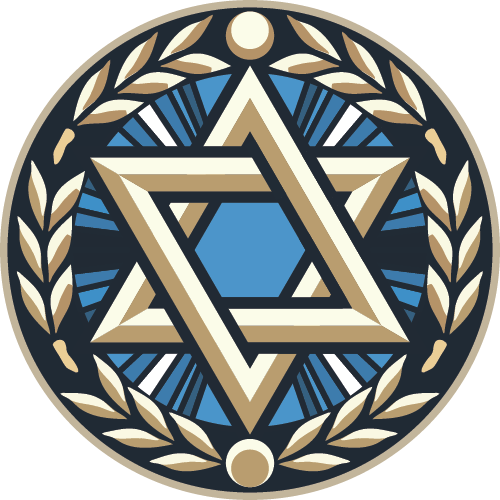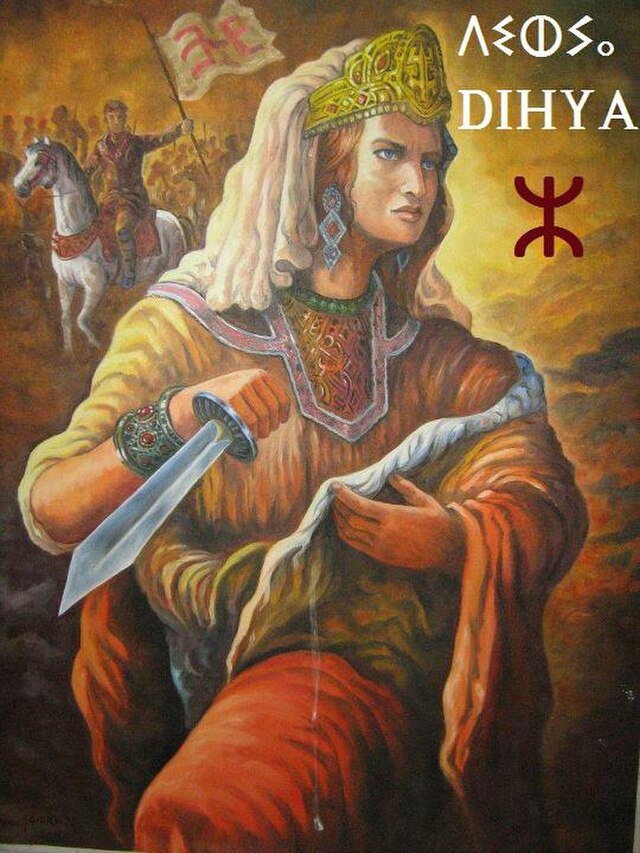While the world remembers kings and conquerors, history often buries those who stood against them. Among the fiercest warriors to ever live was a woman whose name struck fear into an empire—Queen Dihya, the Berber warrior who refused to surrender. Her story is one of rebellion, prophecy, and sacrifice, a legend written in blood and fire.
The Last Dawn Before the Storm
The desert wind howled through the mountains of North Africa as Queen Dihya stood atop a ridge, her gaze fixed on the horizon. Below her, the golden sands stretched endlessly, a battlefield drenched in the blood of those who had dared to conquer her land. She was the last shield between the Berber-Jewish people and the unstoppable tide of the Umayyad Caliphate.
For years, they had tried to break her. Armies had been sent, warriors had fallen, but Dihya remained—a warrior-queen, a prophet, a symbol of defiance. Tonight, she knew, would decide everything.
Who Was Queen Dihya?
Long before the Arab expansion reached North Africa, Berber tribes roamed the vast lands from the Atlas Mountains to the Sahara. Some were Jewish, some were Christian, and many held on to ancient beliefs, but they were all warriors, traders, and survivors of harsh lands.
Among them rose a legend—Dihya, or “The Kahina” (meaning “The Seer”). Born into the Jarawa tribe, a Berber people of Jewish heritage, she was said to possess not only extraordinary beauty but also an unmatched gift: foresight. Some whispered that she could see the future, while others claimed her wisdom was simply beyond human.
But one thing was certain—Dihya was no ordinary woman. She was a leader destined for war.
The Rise of a Warrior-Queen
The Arab-Muslim armies, fueled by the expansionist ambitions of the Umayyad Caliphate, had already conquered much of North Africa. One by one, Berber chiefs fell, cities surrendered, and the desert itself seemed to bow to the invaders.
And then, they met her.
Dihya did not flinch before the coming storm. She rallied warriors from different tribes, uniting Berbers, Jews, and even remnants of Roman and Byzantine forces who had lost everything. She did what no man had done—she pushed back the invaders.
In a battle that shook the desert, her forces shattered the Muslim army, sending them retreating into the sands. The Arabs were not just defeated—they were humiliated. Dihya had beaten the unstoppable.
Her legend grew. Tales spread of her fearless charge, of how she fought like a lioness, and how no blade could pierce her spirit. But her greatest battle was yet to come.
A Queen’s Dilemma: The War She Could Not Win
After her victory, Dihya faced a choice—continue fighting and risk destruction, or attempt to survive through diplomacy. Some say it was in this moment that she saw the truth: the Arab armies would always return, stronger each time. Her land would eventually fall.
In an act of brutal strategy, she ordered her warriors to burn fields, destroy water sources, and reduce towns to ashes—if the invaders wanted her land, they would inherit only ruin.
But there was one thing she could not destroy: her people’s future.
Knowing that survival sometimes meant adaptation, she sent her two sons to the enemy camp, raising them to understand their ways, to become part of them—perhaps, to one day reclaim what was lost from within.
The Final Battle & The Death of a Legend
The Arabs returned, led by the powerful general Hasan ibn al-Nu’man. This time, they came in full force, determined to end the rebellion. For days, the desert roared with the clash of swords and the cries of warriors.
Dihya, the last queen of free North Africa, fought until the very end. Some say she fell in battle, sword in hand, surrounded by the bodies of her enemies. Others claim she was captured and executed. No one knows for certain how she died.
But legends never truly die.
Legacy: The Queen Who Became Immortal
Though the Arabs conquered North Africa, they never forgot the woman who stood against them. Even in their records, she was not merely an enemy—she was respected, feared, almost mythic. Her sons, raised in the new Islamic world, would later become part of its leadership, fulfilling her vision in a way few could understand.
Today, Berbers still speak of Kahina, the Warrior-Queen, the woman who stood against an empire. In her defiance, she became a symbol—not just of Jewish resilience, but of all who dare to fight against oppression.
She was more than a queen. She was fire and fury, wisdom and war, the last roar of a free people.
And her roar still echoes.
Why Queen Dihya Still Matters Today
Dihya’s story is one of strength, strategy, and sacrifice. She represents:
✔ Jewish resistance in history—a powerful, lesser-known example of Jewish warriors.
✔ The fight for survival—when to resist, when to adapt, and the price of both.
✔ A timeless symbol of women’s leadership in battle—a warrior who defied norms long before Joan of Arc.
Her name might not be in every history book, but her legend refuses to be forgotten.
Though sources differ on her exact beliefs—some say she was Jewish, others pagan or Christian—what’s undisputed is that she led a powerful resistance of Berber tribes and became a legend among both enemies and her own people.

